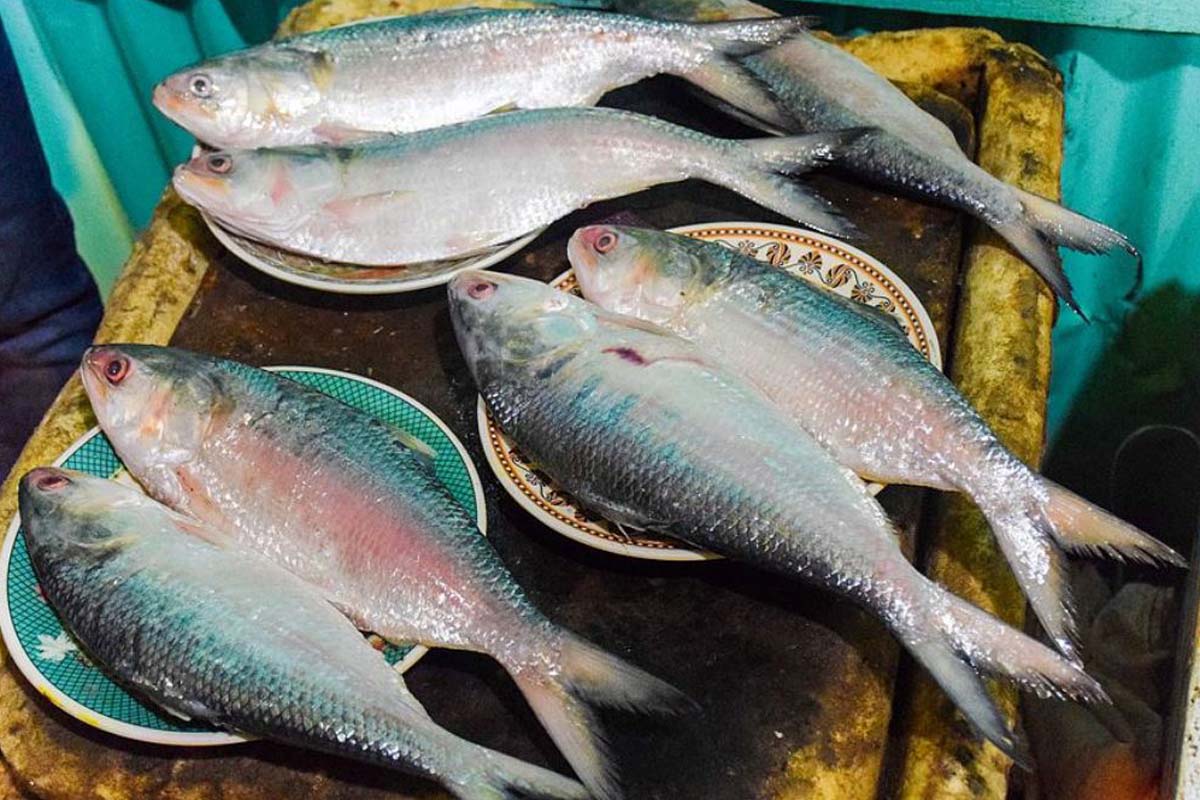Forgotten heroes
Ullaskar suffered immensely after being caught by the British and was sent to the Cellular jail in the intractable Andamans.
As for the households which do not have the benefits of expert hands that produce **bhapa ilish or the lip-smacking other varieties of the fish in record time, the less than plentiful supply of hilsa is no cause for concern.

(Photo: Wikimedia Commons)
One does not have the foggiest notion about the talks which the Prime Minister of a neighbouring nation had with the chief minister of this state about the sharing of water from a river which flows through the latter’s bailiwick. But hilsa featured prominently in their talks as the chief minister told people’s representatives during a session of the state Assembly last week.
There is gloom all especially among the foodies in the wake of the Teesta row. Its fallout has been the disappearance of hilsa on the plates across the border from the land of Padma as a fallout over a dispute over Teesta waters.
But an irrepressible legislator gave cause for cheer when she announced that an exploration of possibilities is on about breeding hilsas from Bangladesh in some canals which have direct connection with the tumultuous waters of Padma. Weird though the proposition may sound, the hilsa lovers have been assured for the time being that the days are not far when they can lunch and sup on hilsa without a pocket pinch.
Advertisement
Not only the hilsas bred in canals will be something of a marvel, but it will certainly cut down the transport cost which inflates the price of fish when it is transported to Lake Market or Gariahat or Maniktala from the Indo-Bangla border. It is a love of Bengali language and hilsa which is a common bond between the residents of this state and the neighbouring nation. And they also have a questioning mind which never ceases to see through castles in the air. Small wonder, no sooner have the legislators’s words about the novel method of hilsa cultivation have come out in cold print, the doubting Thomases have been working overtime.
The gourmets and gourmands are already having second thoughts about the “canal breeding “ as Padma is a long way off the state and deawing its water to the canals which have direct connection with this river seems to be a tall order. And what about the spurt of sweet water in the rivers from the nor’westers which trigger a boom of **hilsas ? As the river water flows from the creeks to the confluence with the sea, the change in the water quality will trigger a boom of hilsas. Will such a phenomena be perceived in the canal waters ? If so, how ? One may salivate imagining shoals of what is known as khoka ilish moving though the canals where they will reach their full size.
It will be a matter of time for the truckloads of hilsa to reach the city markets. Of course, the bazaar babu will be spoilt for choice. And his imagination will run riot at the state of things once it begins to rain steadily ushering in a huge supply of hilsa. But there is no sign of it in near future though the chief minister has underscored the idea of hilsa breeding in the state saying experts are working on it at a centre in Diamond Harbour.
So perish the thought of the food loving thousands who love to visit the bazaar every morning to pick up daily essentials do not mind if they can pick up a gleaming pair of hilsa at a bargain. The prices are steep and given the quantity of hilsas available, a glut of the delicacy to the people’s platter in the next few days seems to be a pipe dream. One is looking forward to situation when the choice will be abundant.
The other precondition being that the price of hilsa will not be out of reach for a sizeable number of households. But the prices would be slashed after an abundant supply of what an eminent poet who happened to be a contributor to The Statesman described as “jaler ujjal fasal” ( bright crop of the water). After the skies open up, the office goers who will be returning home drenched after a smart shower will be the first to thank the vagaries of nature for the supply to their plates. But the drizzles are to become a downpour. As for the bazaar babu , the time has come for him to be worried when he will have to move from stall to stall to identify the best qualities offered at the most attractive prices. Now the hilsa prices are sky high. There are not enough silvery delight which can be called a feast for the eyes. Hardly anyone is bothered with the reason which will trigger an upsurge in the supply of hilsa. It is for the scientists and pisiculturists to ascertain whether a change of wind flow or a variation of the river current will make the hilsa swim upstream.
As for the households which do not have the benefits of expert hands that produce **bhapa ilish or the lip-smacking other varieties of the fish in record time, the less than plentiful supply of hilsa is no cause for concern. For no unfavourable comparisons will be drawn with the womenfolk next door who rustle up in a jiffy ilish macher jhol, sorshe ilish, hilsa curry with strips of brinjal who love it with rice and of course doi ilish. Some who like it fried to go with their liquid stimulants in the evening will have to settle for other options. Of course, they can conjure of visions of “canal bred hilsa” when they are deep in their cups. The time to raise a toast to the “bright crop of water” bred in canals has not yet come.
Advertisement